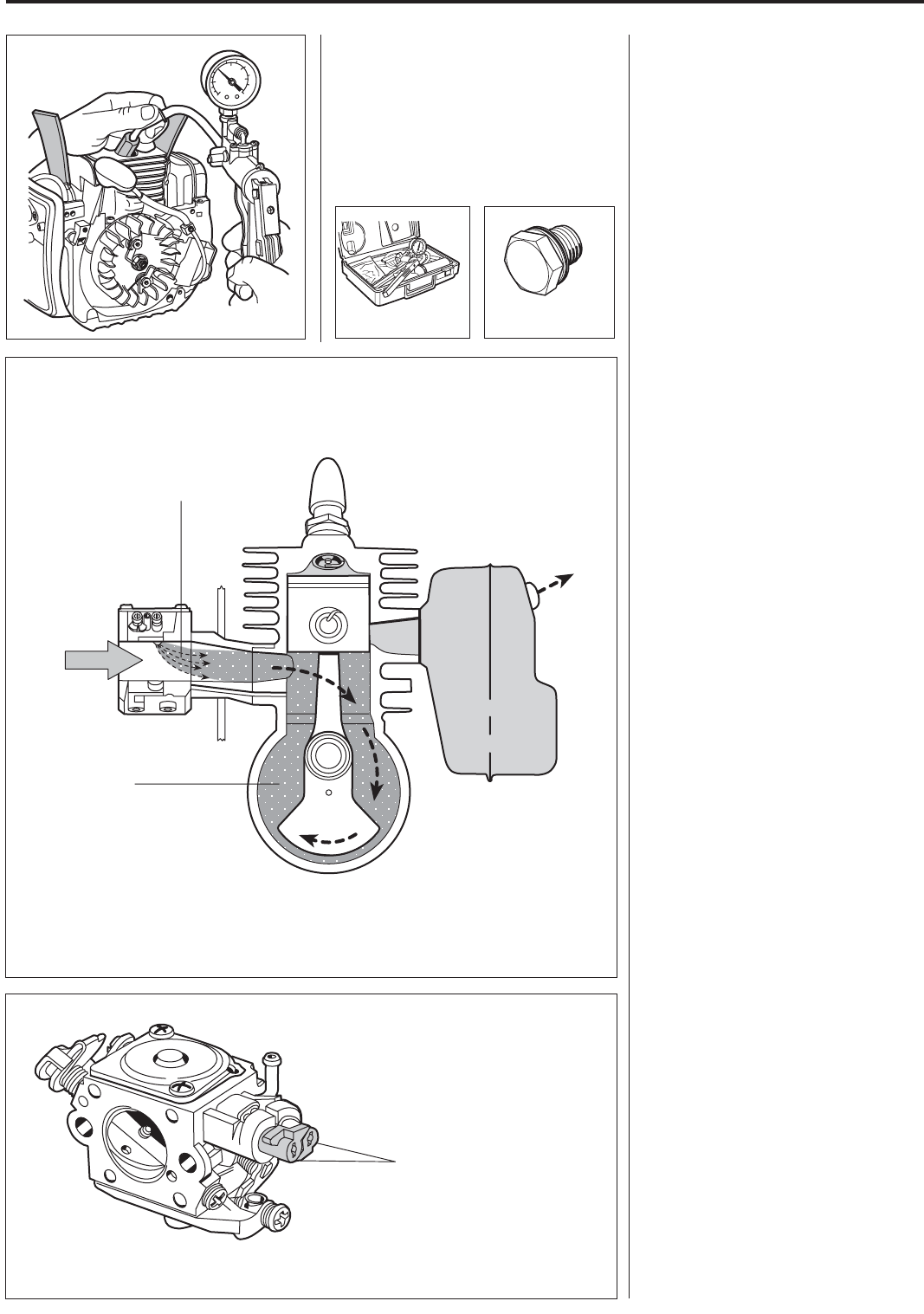
57
7
531 03 06-23 503 55 22-01
Crankshaft and crankcase
Fit plug 503 55 22-01 instead of the
decompression valve.
Connect meter 531 03 06-23 and check
for leakage.
Fit plug 503 55 22-01 instead of the
decompression valve.
Connect meter 531 03 06-23 to the
nipple and pump up a pressure of 50
kPa (0.5 kp/cm
2
) in the crankcase.
Max. permitted leakage:
20 kPa (0.2 kp/cm
2
) per 30 seconds.
Connect meter 531 03 06-23 to the
nipple and lower the pressure in the
crankcase to 50 kPa (0.5 kp/cm
2
).
Max. permitted leakage:
20 kPa (0.2 kp/cm
2
) per 30 seconds.
Any leakage can be difficult to localise
if the crankcase is depressurised.
When leakage has been established
with a vacuum, you can apply a slight
overpressure (0.1–0.3 kp/cm
2
) and at
the same time apply a layer of thin oil to
the joints and the sealing ring contact
surfaces on the crankcase to make leak
detection easier. Bubbles clearly mark
the position of the leakage.
What makes the E-Tech engine design
unique is not a specific design solution
but rather several solutions interacting
to reduce flushing losses in the engine.
The carburettor’s job is to mix the air
and fuel in the right proportions to give
a combustible mixture, irrespective of
the speed and workload. The carburet-
tor’s adjustable needles have been
fitted with movement limiters to prevent
the engine from being run with a too
“rich” fuel/air mixture. (Also see the
“Fuel system” chapter).
Husqvarna E-Tech
In 1996 Husqvarna presented a new,
improved two-stroke engine as a part
of the company’s efforts to produce
engines that emit smaller amounts of
hazardous substances.
The new engine was given the desig-
nation E-Tech and was first used in a
new brush cutter model.
More stringent environment regulations
in the USA, which primarily involve a
lowering of the hydrocarbons, nitrous
oxides and carbon monoxide content,
brought about the new engine design.
Environment degradation is reduced
through decreasing the amount of
unburned gases (flushing losses) in the
exhaust fumes.
Comparisons between an E-Tech
engine and an older engine design
show that the CO content has been
halved and the hydrocarbons and
nitrous oxide contents have been
reduced by close to 70%. In addition a
powerful increase in output is gained.
Adjustable fuel jets with
movement limiters
Exhaust gases
consisting of
Hydrocarbon (HC)
Nitrous oxide (NO
x
)
Carbon monoxide (CO)
Carbon dioxide (CO
2
)
Particles (PM)
Fuel/air mixture consisting
of:
92% air
8% petrol
Air consisting of:
21% oxygen
78% nitrogen
1% other
Fuel consisting of
Hydrocarbons (petrol)
Two-stroke oil (2%)


















